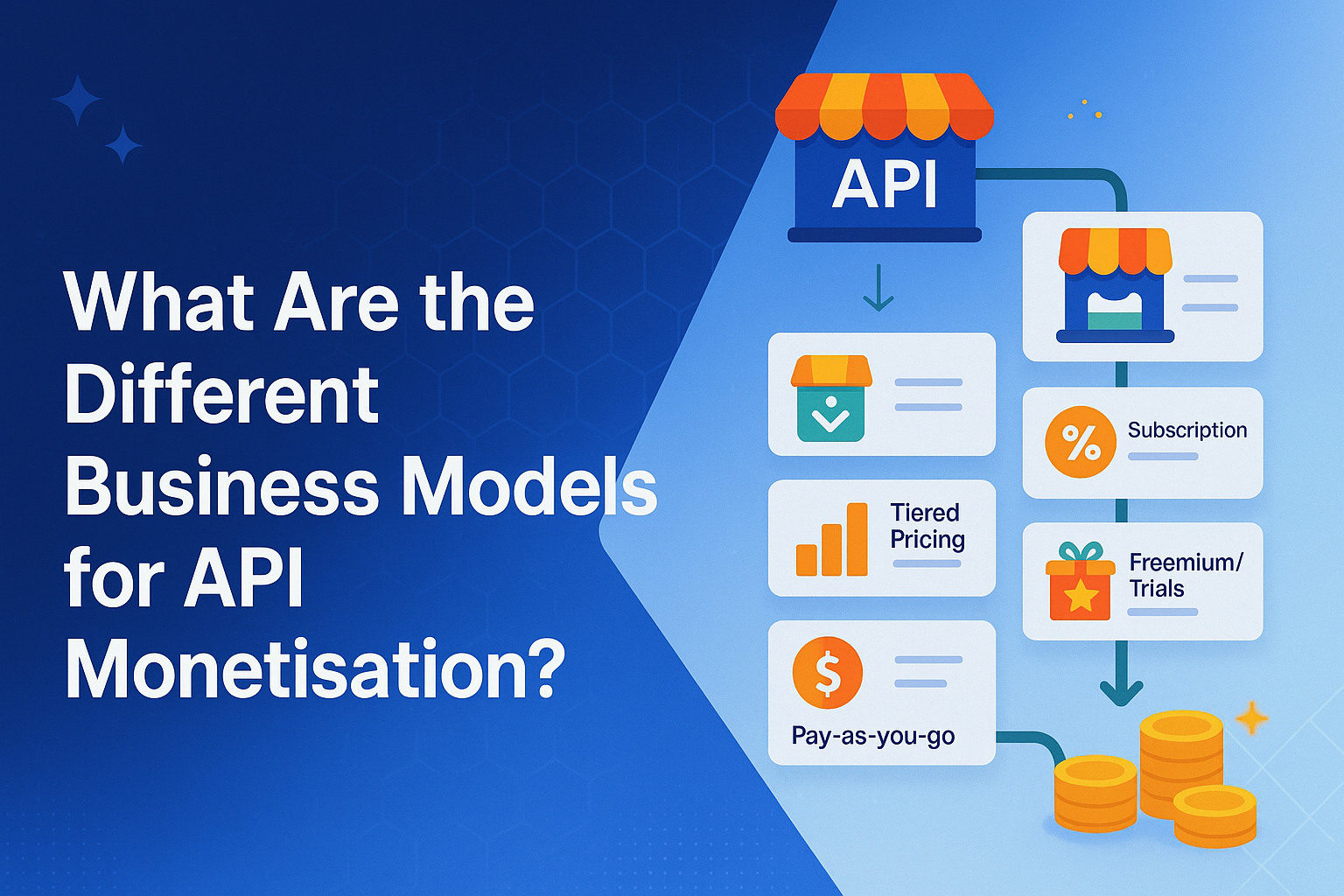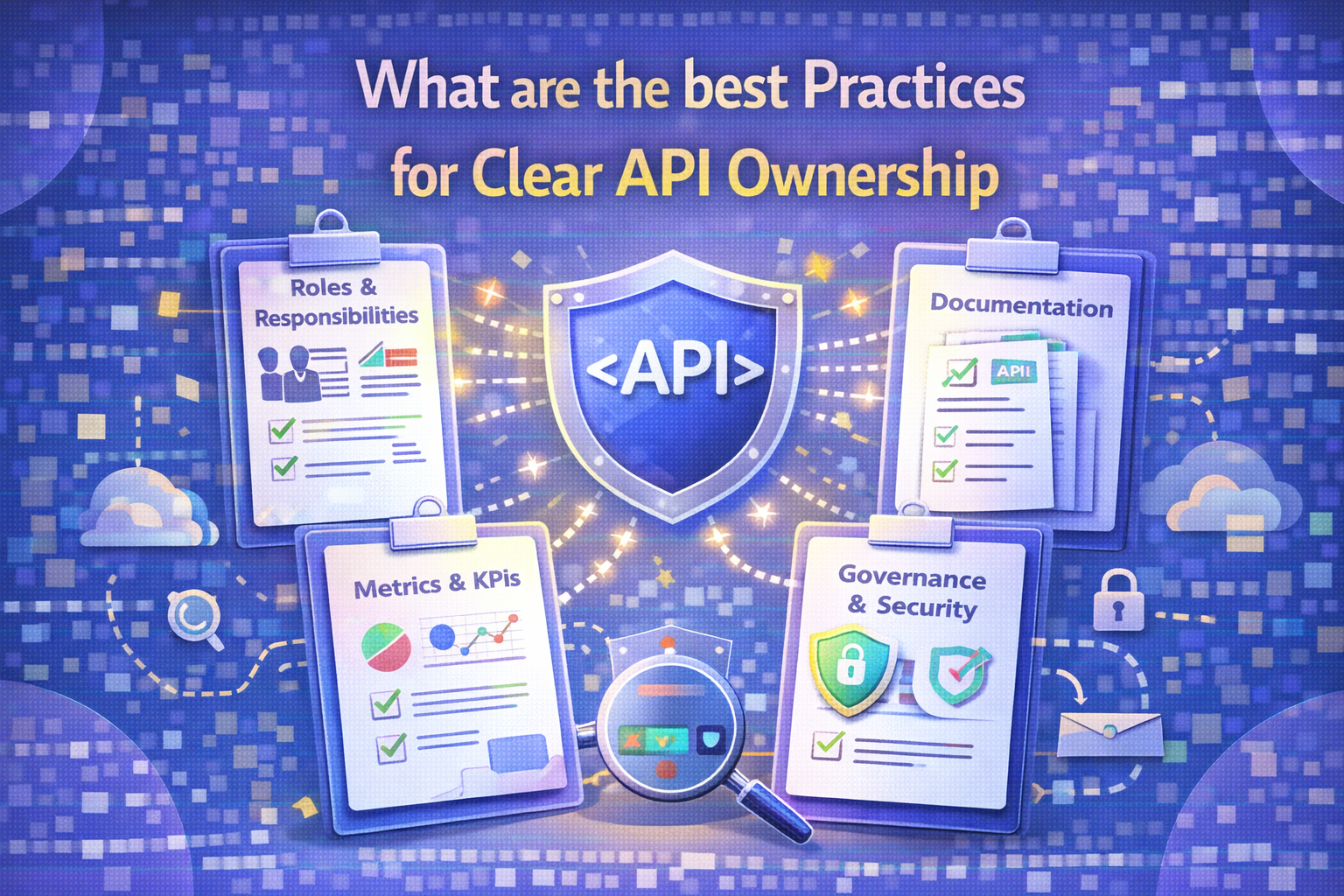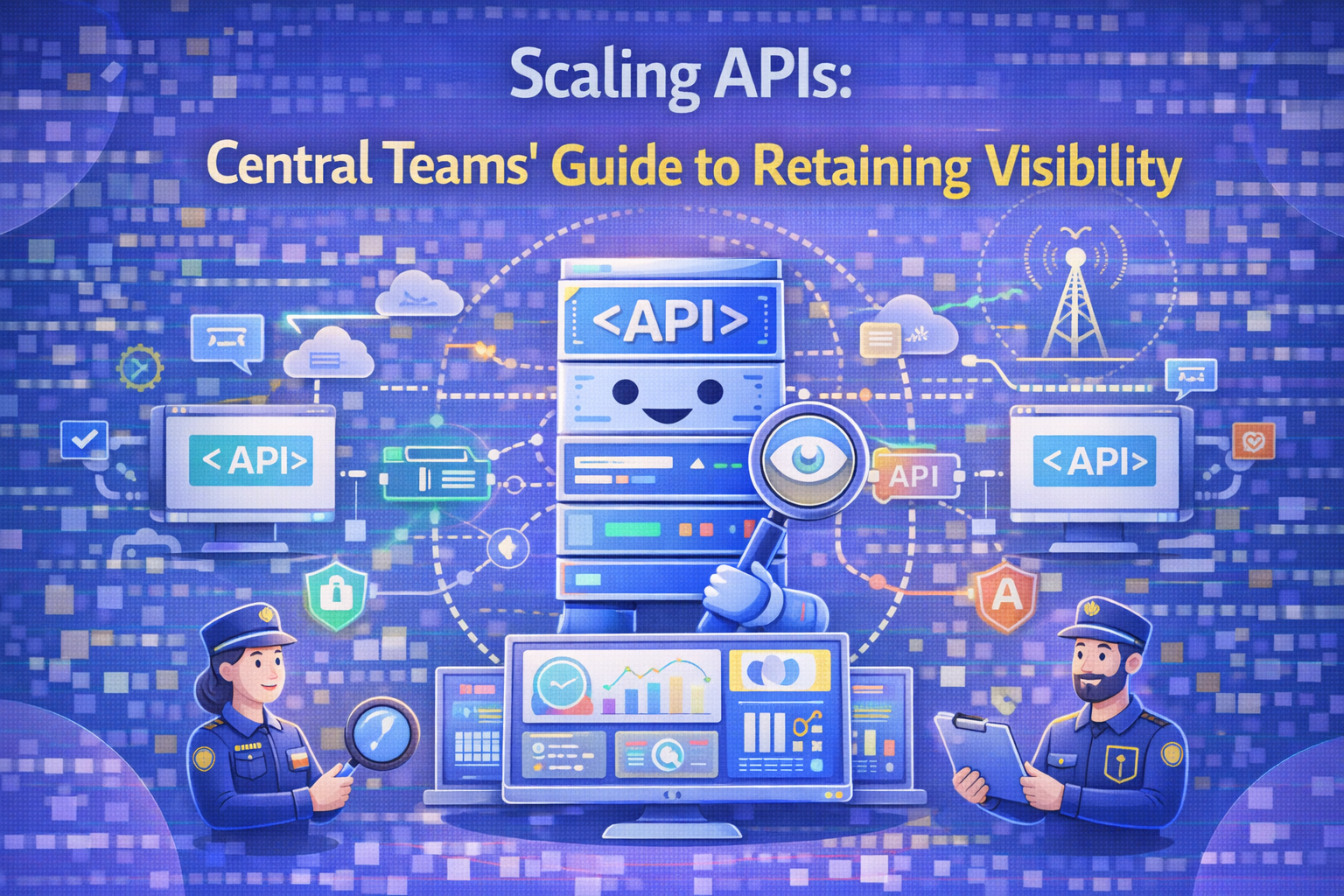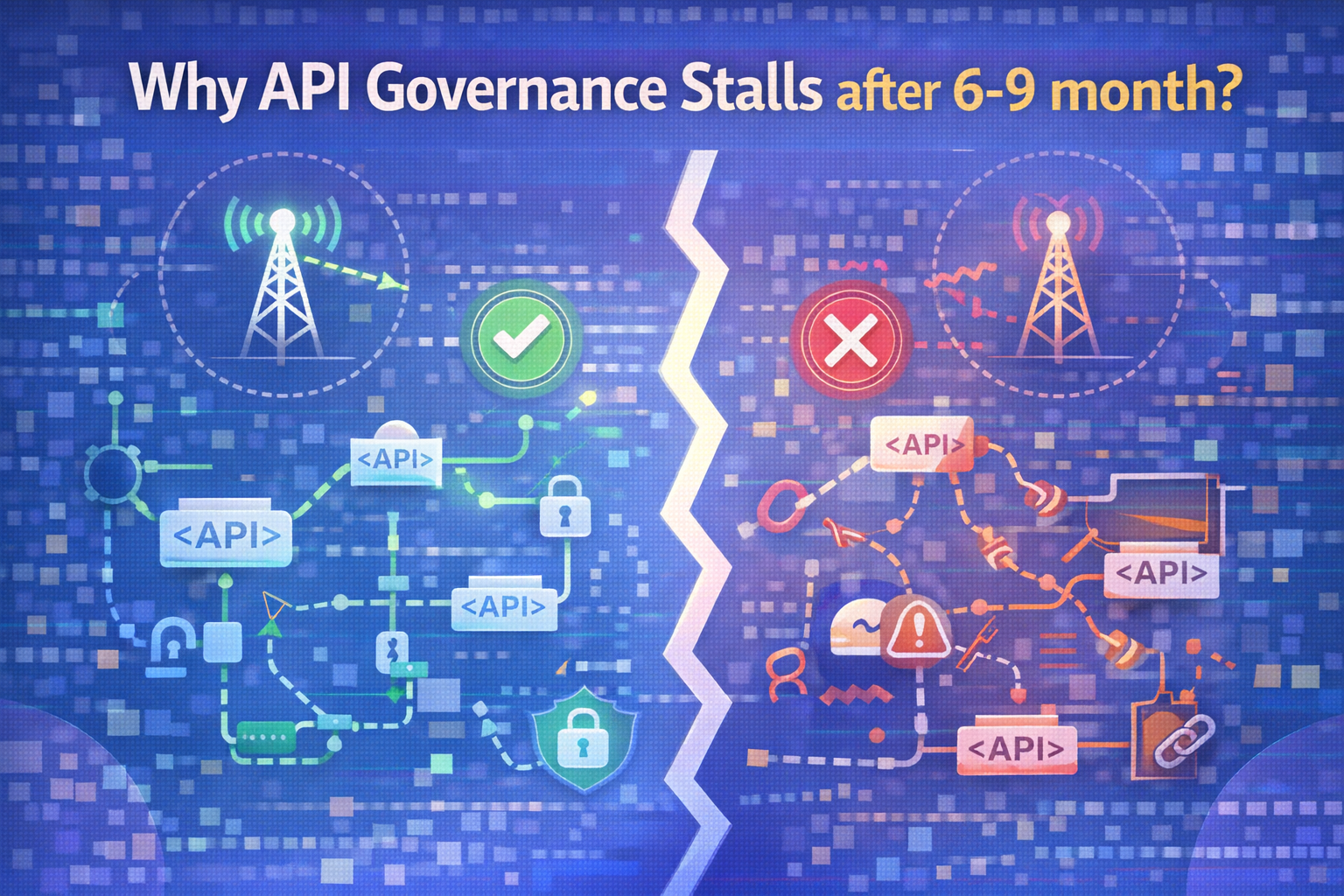API Monetization
What Are the Different Business Models for API Monetization?
Updated on:

Years ago, APIs were simply technical connectors to power integrations and pull data. Today, leading businesses are flipping the script. APIs are now built keeping monetization in mind to transform them into revenue generating engines.
However, at the core of this shift are business models for API monetization as they determine the value, scalable usage and sustainable income generated from APIs.
This blog breaks down what API monetization is, the key API monetization business models, and explains how to select one for long-term success.
Overview: Business models for API monetization
Business models for API monetization are the different ways companies can earn revenue or create value from their APIs. They define how access and pricing are structured, such as charging per use, offering subscription plans, or using APIs to strengthen core products and partnerships.Each model helps businesses turn their APIs from technical assets into sustainable growth drivers.
Direct API monetization models
When you monetize an API directly, you decide exactly how it earns revenue. You might charge per request, offer set subscription plans, or create premium tiers. Each model shapes how your API delivers value and generates income for your business.
The main direct API monetization models are:
1. Pay-per-use pricing
In a pay-per-use model, you bill customers each time they call your API. It works best when every request delivers clear value. This way, you match cost to actual demand and grow revenue alongside customer adoption.
2. Subscription plans
With subscription plans, you charge a fixed fee for a set level of API access. It gives customers predictable costs and gives you steady revenue. You can create different tiers to match various usage levels and business needs.
3. Revenue-sharing model
A revenue-sharing model works by letting partners build on your API and agreeing to split the revenue their products generate. They have every reason to push adoption, because higher usage means higher earnings for them. You gain new markets and customers without building the reach yourself.
4. Transaction fee model
Some APIs earn revenue every time they handle a transaction, whether it’s a payment, a booking, or another measurable action. The transaction fee model works because customers see exactly what they’re paying for and you grow revenue as their activity grows.
5. Freemium
The freemium model offers basic API access at no cost while reserving advanced features, higher limits, or premium data for paying customers. After they see the value, they pay for more calls, better tools, or faster help. It removes risk for new users while giving you a clear way to turn them into paying customers.
6. License or seat-based model
A license or seat-based model charges for the number of people who can access your API. It works best when usage ties to specific roles in an organization. The price stays predictable and connects directly to the size of the user base.

Indirect API monetization models
Indirect API monetization models help your API earn its keep without charging for access. They work by increasing the value of other products, attracting partners, or creating new paths to revenue that the API alone doesn’t directly collect.
The main indirect API monetization models include the following:
1. Product adoption model
An API can drive revenue without selling access if it makes your main product easier to adopt. By removing setup barriers and fitting smoothly into existing systems, the API shortens the sales cycle and helps customers see value sooner.
2. Ecosystem expansion model
When your API becomes the link between your product and a wider network of tools or services, every new connection makes the whole ecosystem more attractive. The more developers and partners build around it, the more your core business benefits.
3. Cross-selling model
With this model, the API becomes a pathway to the rest of your portfolio. Someone might adopt one product and, through the API, see how easily it connects to another. Over time, those links turn single-product customers into multi-product customers.
4. Data enrichment model
Some APIs pull in data that improves the value of another product you sell. When richer insights or more accurate results come from that connection, customers have a stronger reason to keep paying for the main product.
Real-world API monetization examples
APIs drive measurable revenue across industries, from payments to logistics. Understanding real implementations shows how monetization models work in practice and how companies adapt them to meet strategic goals in competitive markets.
Let’s explore notable real-world API monetization model examples:
Direct API monetization examples
Companies using direct monetization charge for API access through clear pricing models. Each example shows a different way to generate revenue directly from usage or premium features.
Here are three direct monetization cases:
1. Twilio charges customers based on what they actually use with its communication APIs, you pay for each message or call you make. It means their revenue grows when customers use more, and it lets businesses start small then increase usage when they need to.
2. Stripe’s payments API charges a small percentage for each transaction it processes. That single model supports businesses of every size, from individual sellers to global platforms. As customers grow their sales volume, Stripe’s own revenue rises in step.
3. Google Maps Platform charges developers based on the number of requests made to its mapping, routing, and places APIs. This model lets businesses pay in proportion to how much they integrate mapping into their products.
Indirect API monetization examples
Indirect monetization examples show how APIs grow revenue without direct fees. They can drive adoption, strengthen partnerships, and boost sales of other products. Here are three indirect monetization cases:
1. Spotify’s API allows integrations which enable playing music, sharing playlists and recommendations in other apps. When Music is brought into the places in the apps that people already use, listeners tend to stay a bit longer and new listeners often discover it.
2. Amazon web services has APIs which connect directly to AWS cloud services. Developers use these APIs to build and run products using AWS infrastructure. As more products are using these services the usage of AWS increases and the recurring revenue increases.
3. Shopify’s API lets developers create applications that expand its e-commerce platform. Merchants add these applications to improve their operations and sales performance. Each adoption boosts Shopify’s revenue through app purchases, subscriptions, and related service fees.
How to choose the right API monetization model
Picking the right API monetization model determines how your business makes money from its technology. It needs to fit what customers actually want, work with what you can already do, and create obvious ways to grow. When you choose poorly, you waste resources and miss out on revenue.
Here are the factors you should consider before selecting an API monetization model:
- Align with business objectives: An API model works best when it supports the company’s main priorities. If market expansion matters most, choose one that lowers the barrier for new customers. If predictable revenue is the aim, lean toward plans that encourage steady, ongoing use. The right fit turns the API into a tool that moves the business toward its larger goals, not away from them.
- Understand your target audience: You need to match the API monetization model to the people who will use it. Enterprise clients often want predictable, contract-based pricing. Smaller teams may choose models that keep entry costs low and allow scaling. When you know exactly what each group values, you can set terms that increase adoption and revenue.
- Evaluate technical capabilities: You should check if the API infrastructure can meet the needs of your chosen model. High-volume usage, complex data processing, and premium service tiers all need strong performance and the ability to grow. Technical issues can hurt the user experience and limit earning potential.
- Assess competitive landscape: Study how competing APIs are priced and positioned before setting your own model. It prevents underpricing and reduces the risk of driving customers toward alternatives. Competitive knowledge also shapes how you package features and define value for your audience.
- Balance revenue with user experience: An API monetization model should work for both sides. If it brings in revenue but frustrates customers, growth slows. Simple terms, fair limits, and clear value keep users engaged while the business earns steadily from their continued use.
Technical & business requirements for API monetization
A successful API monetization plan starts with a solid technical base and clear commercial intent. The technology must deliver security, scalability, and precise usage tracking. The business side must define value, set fair pricing, and focus on revenue outcomes.
Here’s what each side should cover:
Business requirements
Business requirements shape how your API meets market demand. They guide pricing, adoption, and long-term revenue stability.
Key business factors for effective API monetization:
- Value proposition: Tie the API’s strengths directly to your business goals. If you need to cut costs, pick one that automates heavy workloads. If you’re chasing growth, go for scalability and market reach.
- Target audience: Be clear on who you want to serve. Enterprise clients expect custom SLAs and integrations. Startups often prefer lower entry costs and quick, self-service onboarding.
- Pricing strategy: Look for a model that reflects real usage patterns. If activity spikes during certain seasons, flexible billing prevents overpaying. Stable, year-round demand often benefits from fixed tiers.
- Monetization model selection: Decide whether speed or reach matters more right now. Direct models can start generating revenue immediately, while indirect models can widen adoption before you monetize heavily.
- Legal and compliance: Confirm the API meets every regulation in your markets. A single compliance gap can wipe out progress and block deals.
Technical requirements
A strong technical base keeps your API monetization secure and scalable. It supports growth without slowing performance or increasing maintenance issues.
Start with these core technical requirements:
- API management platform: You need something that manages your entire API lifecycle, without your team getting stuck in maintenance work. API management platform keeps updates and new releases from blocking other important projects.
- Security: Secure access isn't something you can skip. You need authentication, encryption, and role-based controls that meet your compliance requirements so one small mistake doesn't become an expensive problem.
- Metering and usage tracking: Track every request, data transfer, and active user in real time. Reliable usage data makes accurate billing and capacity planning possible.
- Quota management and rate limiting: Put usage caps in place that stop abuse and give everyone fair access to your system. When traffic spikes hit, these limits keep everything stable.
- Monitoring and analytics: Track what's happening as it occurs so problems get fixed before users even see them. The data you collect shows where to make improvements and how much growth to prepare for.
Challenges in API monetization
API monetization comes with its share of obstacles. From unpredictable usage patterns to pricing decisions, the wrong move can limit growth and revenue. Let’s break down four challenges you should address early:
1. Unpredictable usage patterns
Unpredictable usage makes it harder to set fair pricing and allocate infrastructure effectively. Sudden spikes can strain resources, while slow periods leave capacity underused. The fix is to track every call in real time and adjust pricing tiers dynamically. A platform with usage analytics, automated billing, and demand forecasting ensures you stay profitable without limiting growth.
2. High operational costs
Running APIs at scale can push costs higher than forecasted, especially when demand grows unpredictably. These expenses can quietly erode margins over time. The solution is to track cost drivers closely and match infrastructure use to actual demand. Smart routing, caching, and load management keep spending in check without cutting service quality.
3. Risk of misuse
Abusive API usage drains resources and disrupts service for paying customers. Spikes from bot traffic or excessive calls can inflate costs and reduce performance. You can prevent this by tracking activity in real time, setting fair usage thresholds, and blocking suspicious patterns before they spread.
4. Complex pricing alignment
Pricing APIs for a diverse customer base is rarely simple. Lower rates can attract smaller clients but leave enterprise usage undercharged, while higher rates risk cutting off emerging accounts. By mapping actual consumption patterns to tiered pricing, you align cost recovery with value delivered. That balance keeps margins healthy and ensures customers see the model as fair.
Future Trends in API monetization
The way companies earn revenue from APIs is changing fast. Monetization is no longer just about counting calls and sending invoices; it is becoming a core part of how businesses design products, work with partners, and reach new markets.
Here are some of the future trends that will shape the next phase of API monetization:
API-as-a-product mindset
Businesses now treat their APIs as complete products rather than technical add-ons. They assign dedicated managers, plan feature roadmaps, and invest in developer support. And with this approach, the revenue growth directly relates to how the product is growing.
Growing revenue through API ecosystems
An API’s value grows when it’s part of a strong partner network. Those connections can lead to new revenue streams, collaborative products, and entry into markets you might not reach alone. That’s why more providers now design incentives that encourage partners to keep building.
Shifting to value-based pricing
Static per-call pricing often leaves money on the table or overcharges light users. Businesses are now linking API rates to the tangible value they deliver, from revenue impact to time saved. This approach not only feels fairer to customers but also aligns provider earnings with actual business outcomes.
Automation shaping monetization strategies
As APIs handle more traffic, tracking usage and billing by hand becomes a liability. Automated systems now measure calls, flag anomalies, and update pricing without human intervention. That consistency keeps revenue flowing and lets teams spend their time on building better products.
Start monetizing APIs strategically
API monetization isn’t just a meter ticking up with every call anymore. The real gains come when pricing, partnerships, and product direction work as one. Treat the API like a business asset, and it starts creating value well beyond the code.
With DigitalAPI, you can track every API call in real time, so pricing changes rely on facts. Compliance checks happen automatically alongside usage tracking. Billing follows the same streamlined process, freeing teams to improve the product, deepen partnerships, and expand the API’s reach.

FAQs
1. What are API monetization models?
API monetization models are the ways you generate revenue from API usage. Common API monetization models include:
- Usage-based pricing – charging per call or transaction.
- Tiered subscriptions – offering set limits and features at different price points.
- Freemium – free access with paid upgrades for advanced features.
- Value-based pricing – tying cost to the measurable impact the API delivers.
2. What’s the difference between direct and indirect API monetization?
Direct API monetization means you charge for the API itself through subscriptions, usage-based pricing, or premium tiers. Indirect monetization doesn’t bill for access; instead, the API supports another revenue stream.
- Direct – a payment gateway API that charges per transaction.
- Indirect – a free API that encourages adoption of a paid analytics platform.
3. Can you monetize public APIs?
Yes, public APIs can generate revenue if you set the right structure around them. You might charge for high-volume access, premium endpoints, or advanced features while keeping basic use free.
4. What is an example of a productized API?
A productized API is packaged, priced, and supported like a standalone product rather than just a technical resource. For example:
- Stripe API – offers payment processing as a complete service with clear pricing, documentation, and support.
- Twilio API – provides messaging and calling features with usage tiers and developer resources.
5. How does usage-based API billing work?
Usage-based API billing charges customers according to how much they use the API instead of a fixed fee. It could mean counting requests, data volume, or transactions.
- Per-call pricing – cost tied to each API request.
- Volume-based pricing – billing based on total data processed or number of transactions.
- Hybrid models – a base subscription with added usage charges.
6. Which companies are successful in API monetization?
Several well-known companies have built strong revenue streams around their APIs. Examples include:
- Stripe – monetizes payment processing APIs with per-transaction pricing.
- Twilio – charges for messaging, voice, and video APIs on a usage basis.
- Google Maps Platform – bills for location and mapping API requests by volume.
7. What tools are needed to monetize APIs?
You’ll need a few core tools to monetize APIs. When these parts are connected, monetization runs smoothly without pulling resources from core product work. Common essentials include:
- API gateway – controls access, enforces limits, and secures requests.
- Analytics and reporting – tracks usage patterns, performance, and revenue metrics.
- Billing and payment systems – automate invoicing and charge customers based on their plan.
- API developer portal – provides documentation, onboarding, and self-service account management.
You’ve spent years battling your API problem. Give us 60 minutes to show you the solution.
.svg)

%20(1).png)




